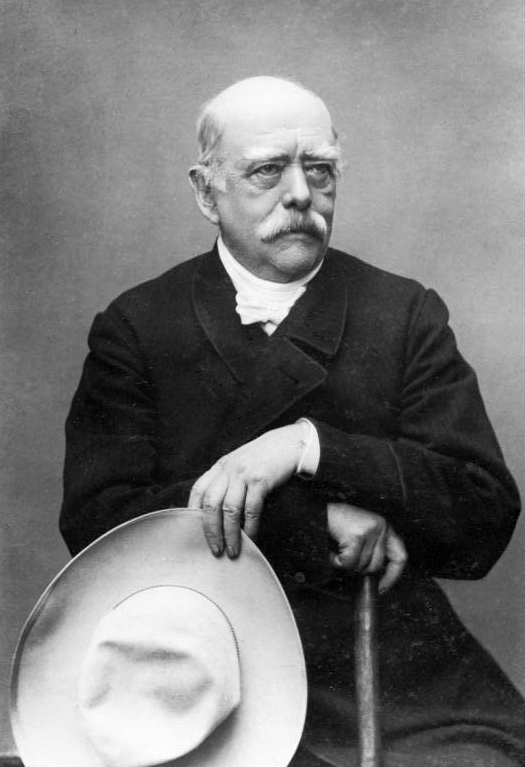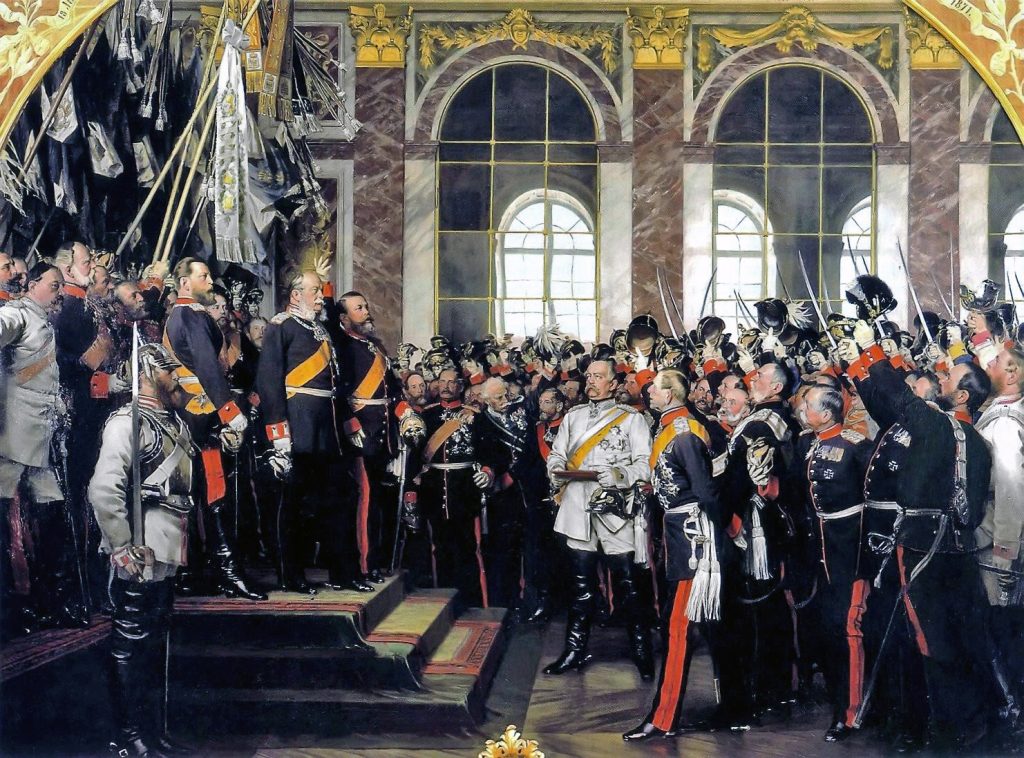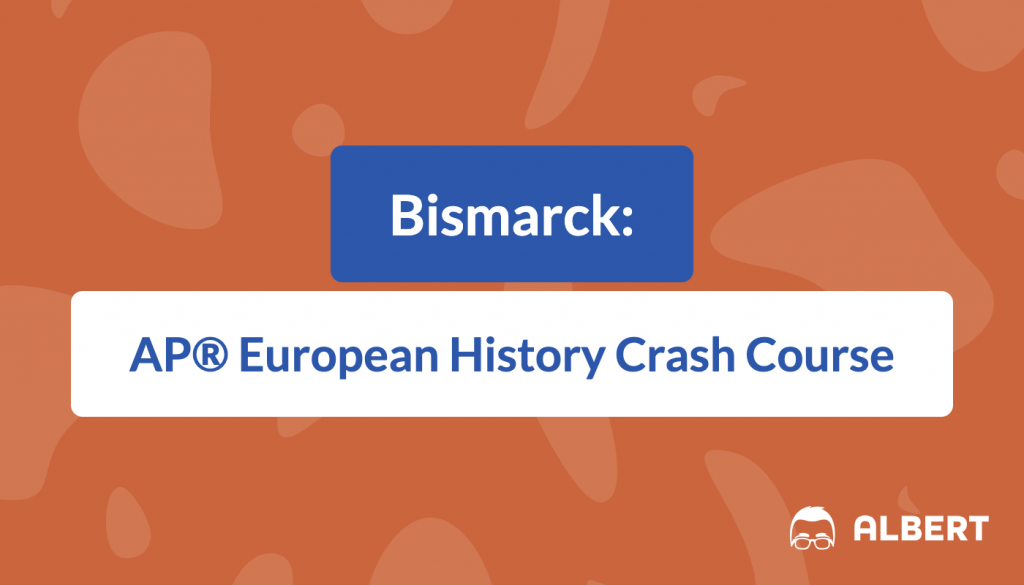Over the course of your studies for the upcoming AP® European History exam you’ve probably come across countless key historical figures and numerous important dates. So much that you may not be entirely certain who or what to focus your studies on.
Well, one thing’s for certain: Otto Von Bismarck is someone you are going to want to get to know during your AP® Euro review sessions. He was a central figure in the unification of modern Germany as we know it today. But that’s not all. His entire political career represented the ongoing political changes and national unifications swept through the entirety of Europe during the 19th century.
We’ve built this AP® European History Crash Course review around everything you’ll need to know for the AP® Euro exam. That means we are not only going to cover the most important dates and events of Otto Von Bismarck’s life, but we are going to guide you through the ways that the AP® exam itself is most likely going to approach this topic.
A Quick Note on Otto Von Bismarck and the AP® European History Exam
You’re gonna want to use this AP® World History Crash Course on Otto Von Bismarck by thinking about him in relation to what else was taking place in Europe at the time.
Bismarck was around in Germany during the 19th century, smack-dab in the middle of growing nationalist movements spreading throughout Europe. Not just the German-speaking lands.
In other words, Bismarck acts as a perfect example of Key Concept 3.4 How European States Struggled to Maintain International Stability in an Age of Nationalism and Revolutions from the College Board’s AP® European Course and Exam Description. But he was not alone. Similar events were taking place in Italy, Austria, etc. So, always remember this information in its historical context.
Who was Otto Von Bismarck?

Otto Van Bismarck was one of the most influential political leaders in German history. He was born to a wealthy Prussian family in 1815 and very quickly went into the political arena as he grew older. He became an extremely popular political leader who believed in unifying all of the different German states into a single nation.
He was so popular, in fact, that he would be appointed as Minister President of Prussia (kind of like a Prime Minister) by the king in 1862. Eventually he would get his wish and managed to force what had once been the independent states of Germany into a single nation, the German Empire. He accomplished this by 1871. Germany fast became one of the most influential powers in Europe.
But how did he accomplish all of this?
Bismarck and German Nationalism
Bismarck helped to create a unified Germany through two key processes: the exploitation of German nationalism and warfare.
When the Holy Roman Empire collapsed in 1806, the various German peoples formed different states as a way to create political stability. Unification of those different states was often discussed, but ultimately infighting kept them all separate.
But following Napoleon’s reign over the region, ideas about national pride kept getting stronger and stronger. That and a growing hatred the German peoples had towards the French. The French kept invading, after all.
Bismarck used these two things to his advantage when he was Minister President of Prussia. He began to start a series of wars with France, Denmark, and with Austria in order to talk all of the German states in to banding together and fighting under one flag.
It actually worked!
Bismarck used his political smarts to get everyone on the same side. And he was pretty sneaky about it. He constantly fought his own parliament, even illegally collecting taxes in order to fund his growing army. What for? Well, he was preparing himself for war.
The first thing Bismarck wanted was Austria out of the picture. Prussia and Austria both wanted control of the northern German states, which made Bismarck nervous enough to start a war with Austria.
Ultimately, he got both Prussia and Austria to invade Denmark but instead of sharing the victory, Bismarck created a new Northern German Confederation with Prussia in charge. Instead of working together, he decided to invade Austria. He defeated Austria without too much effort (mostly because he went behind the Parliament’s back and was funding the military very early on in his political career).
But Bismarck also knew that a war with France would be a guaranteed way to get the southern states to join the confederation. He also knew that the new king of Spain might end up being a distant relative of both William I of Prussia and Napoleon II of France. This could potentially disrupt the balance of powers, so Bismarck used this as an excuse to start a war with France. This would become known as the Franco-Prussian War.

If this all sounds complicated, that’s because it is. Bismarck was a master of using politics and warfare to his advantage.
To make a long story short, the German states all fought together and defeated France in 1871 and to celebrate, they all decided to join one another and create the German Empire in the same year.
Bismarck and Realpolitik
Otto Von Bismarck did more than just help to create a unified Germany. He also helped to start a political philosophy that has been called Realpolitik.
Realpolitik is a word that every AP® European history student should associate with Bismarck. This was the form of politics he followed during his time in power. It pretty much means to be realistic in politics. Work on the task at hand. That sort of thing.
Basically, he did what was practical for the German states not necessarily what was moral or what followed a certain ideology. Most often, this meant putting the state before all else. But it also meant that he could be a bit of a brutal and stubborn leader.
Ultimately, Bismarck’s used the Realpolitik political philosophy to make and break alliances throughout Europe in the late 19th century. But he also helped to create some very powerful alliances, including
• The Three Emperor’s League:
An alliance between Germany, Russia and Austria-Hungary.
• The Triple Alliance:
An alliance between Germany, Italy and Austria-Hungary.
• The Reinsurance Treaty:
An alliance created with Russia after a war broke the Three Emperor’s League.
His version of political pragmatism defined the entire political landscape of Europe during his time in office. The continent had a new powerhouse to deal with: Germany.
But he wasn’t the only one to use this style of political thinking. It was very much in fashion during turn of the 20th-century European political affairs. In particular, Conte de Cavour in Italy used similar tactics of practical militarism, nationalism, and even exploitation to help unify the Kingdom of Italy.
But the alliances that Bismarck and others worked to create actually served to create both unity and anxiety in Europe’s international affairs.
Bismarck’s Legacy
In 1871, the southern states joined with the northern ones to create a unified Germany. This new country had a terrifyingly powerful army, and the nationalist feelings inspired by the Austro-Prussian and the Franco-Prussian wars was unshakable.
Bismarck, and everyone else in Europe, knew that Germany was among the strongest countries between them all. This conflicted with the balance of power throughout Europe, and Bismarck tried hard to uphold the balance. He succeeded in doing this through a complex system of alliances, including the Three Emperor’s League, the Triple Alliance, and the Reinsurance Treaty.
The alliances Bismarck created to maintain the balance of power were key to keeping peace throughout Europe. In 1890, Wilhelm II, the new German Emperor, dismissed Bismarck from his role as the Chancellor of Germany. When Bismarck left, so did his foreign policy. After Bismarck’s dismissal, Germany grew more hostile with their alliances and provoked tension between the great powers of Europe.
This tension eventually led to what has been termed the “Powder Keg” and the beginnings of World War I.
Bismarck on the AP® European History Exam

As we have mentioned throughout this AP® European History Crash Course, Otto Von Bismarck can stand in for a series of very significant events in the modern history of Europe. That also means as a key historical figure in European history, he can pop up on the AP® European History Exam in a number of contexts.
When studying for the AP® European History Exam, it’s going to be necessary that you understand Bismarck’s role in a greater European context. For example, he was not the only leader enacting political change and national solidification in the 19th century. Think about him in relation to what’s going on in Italy at that point in time. The creation of these two modern European nation-states shifted the political environment—an environment that’s been feeling effects to this day.
Speaking of political environments, keep in mind all of the political maneuvers that we’ve covered in this AP® European History Crash Course. Always remember the ways that Bismarck used the Realpolitik system to manipulate and maneuver the state’s power.
Just remember Key Concept 3.4 from the College Board’s AP® European Course and Exam Description and you’ll be golden.
These are the types of things you’re going to want to keep in mind when studying for the AP® World History Exam. But why take our word for it? Let’s take a look at an example from the College Board’s AP® European Course and Exam Description. On page 171, you can find this question:
The political condition of Germany described in the passage did not change until
1. A) 1789
2. B) 1815
3. C) 1871
4. D) 1945
The passage in question is the one on page 168:
“Assume, O men of the German lands, that ancient spirit of yours with which you so often confounded and terrified the Romans and turn your eyes to the frontiers of Germany…”
Just by glancing through the quote, two major ideas should be popping up in your head. First, it was written in 1492 and that it’s generally discussing German feelings towards national identity.
We already know that this was an era of intense national pride throughout Europe at this time, but that did not indicate national unity. That came later. We do know, however, after reading this AP® World History Crash Course that Otto Von Bismarck helped to unify the German peoples into a single nation beginning in 1871. This is why the answer should most clearly be C.
Even if you aren’t entirely sure about when Bismarck took over the German political scene, your general knowledge concerning not only the history of German nationalism, but that of Italy, Hungary, Austria should tell you that the late 19th century comes out as the most realistic answer.
Remember this and the other advice provided to you in this AP® World History Crash Course review on Otto Von Bismarck and you will definitely be one step closer to scoring that 5 on your upcoming AP® World History Exam. Good luck!
Looking for more AP® European History practice?
Check out our other articles on AP® European History.
You can also find thousands of practice questions on Albert.io. Albert.io lets you customize your learning experience to target practice where you need the most help. We’ll give you challenging practice questions to help you achieve mastery in AP® European History.
Start practicing here.
Are you a teacher or administrator interested in boosting AP® European History student outcomes?
Learn more about our school licenses here.

